Popular categories
Looking for a yarn?

100% Cotton
from 2.80 $ /50g
Order DROPS Muskat from Wool Warehouse Direct Ltd
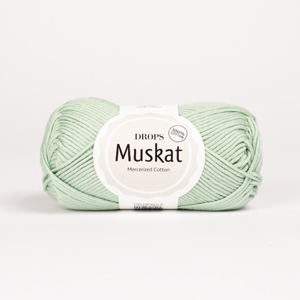
|
DROPS Muskat uni colour 100% Cotton |
2.80 $ /50g |
Order |
Clicking the ORDER button will redirect you to Wool Warehouse Direct Ltd website
Order DROPS Buttons

Flower (white) No. 600
OrderClicking the ORDER button will redirect you to Wool Warehouse Direct Ltd website
Order DROPS Needles & Hooks
Clicking the ORDER button will redirect you to Wool Warehouse Direct Ltd website
The yarn cost is calculated from the pattern’s smallest size and the yarn’s cheapest product type. Looking for an even better price? You might find it on the DROPS Deals!
Daisy Fields Cardigan
Knitted jacket for children in DROPS Muskat. The piece is worked top down with raglan, lace pattern on the sleeves and I-cord bands. Sizes 2 – 12 years.
Change language:
English (US/in)- English (US/in)
- Česky
- Dansk
- Deutsch
- Eesti keel
- English (UK/cm)
- Español
- Français
- Íslenska
- Italiano
- Magyar
- Nederlands
- Norsk
- Polski
- Português
- Suomi
- Svenska
- English (UK/cm), Bulgaria
- English (UK/cm), Croatia
- English (UK/cm), Greece
- English (UK/cm), Latvia
- English (UK/cm), Lithuania
- English (UK/cm), Romania
- English (UK/cm), Slovenia
- Česky, Slovakia
#daisyfieldscardigan
DROPS Design: Pattern r-038-bnYarn group B
-------------------------------------------------------
SIZES:
2 - 3/4 - 5/6 – 7/8 - 9/10 - 11/12 years
Child’s height in cm:
92 - 98/104 - 110/116 - 122/128 - 134/140 - 146/152
Child’s height in feet:
3ft - 3ft3/3ft5 - 3ft3/3ft5 – 3ft7/3ft9 - 4ft5/4ft7 - 4ft9/4ft12
Finished measurements:
Chest measurements: 64-68-72-76-80-84 cm = 25¼"-26¾"-28⅜"-29½"-31½"-33"
Full length: 33-36-40-44-48-50 cm = 13"-14¼"-15¾"-17¼"-19"-19¾"
All measurements in charts are in cm.
YARN:
DROPS MUSKAT from Garnstudio (belongs to yarn group B)
250-250-300-350-350-400 g color 18, white
BUTTONS:
DROPS BUTTONS NO 600: 6-6-6-7-7-7 items.
NEEDLES:
DROPS CIRCULAR NEEDLE SIZE 4 MM = US 6: Length 60 cm = 24".
DROPS CIRCULAR NEEDLE SIZE 3 MM = US 2.5: Length 60 cm = 24".
DROPS DOUBLE POINTED NEEDLES SIZE 4 MM = US 6.
DROPS DOUBLE POINTED NEEDLES SIZE 3 MM = US 2.5.
The technique MAGIC LOOP can be used – you then only need 80 cm = 32" circular needle in each size.
KNITTING GAUGE:
21 stitches in width and 28 rows in height with stockinette stitch = 10 x 10 cm = 4" x 4".
NOTE: Needle size is only a guide. If you get too many stitches on 10 cm = 4", change to a larger needle size. If you get too few stitches on 10 cm = 4", change to a smaller needle size.
-------------------------------------------------------
Alternative Yarn – See how to change yarns here
Yarn Groups A to F – Use the same pattern and change the yarn here
Yarn usage using an alternative yarn – Use our yarn converter here
-------------------------------------------------------
You might also like...

100% Cotton
from 2.80 $ /50g
Order DROPS Muskat from Wool Warehouse Direct Ltd

|
DROPS Muskat uni colour 100% Cotton 2.80 $ /50g Order |
Clicking the ORDER button will redirect you to Wool Warehouse Direct Ltd website
Order DROPS Buttons

Flower (white) No. 600
OrderClicking the ORDER button will redirect you to Wool Warehouse Direct Ltd website
Order DROPS Needles & Hooks
Clicking the ORDER button will redirect you to Wool Warehouse Direct Ltd website
The yarn cost is calculated from the pattern’s smallest size and the yarn’s cheapest product type. Looking for an even better price? You might find it on the DROPS Deals!
Pattern instructions
EXPLANATIONS FOR THE PATTERN:
-------------------------------------------------------
GARTER STITCH (worked back and forth):
Knit all rows.
EDGE STITCHES (I-cord):
WORK 2 EDGE STITCHES AT BEGINNING OF ROW:
Slip 1 stitch purl-wise with the strand in front, knit 1.
WORK 2 EDGE STITCHES AT END OF ROW:
Work until there are 2 stitches left on the row, slip 1 stitch purl-wise with the strand in front, knit 1.
Repeat at the beginning and end of each row.
BUTTONHOLES:
Work buttonholes on the right band (when the garment is worn). Work from the right side when there are 4 stitches left on the row as follows: Make 1 yarn over, knit 2 together, 2 edge stitches. On the next row (wrong side), knit the yarn over to leave a hole.
The first buttonhole is worked on the first row after the neck. The other 5-5-5-6-6-6 buttonholes are then worked with 5-5½-6½-6-6½-7 cm = 2"-2⅛"-2½"-2⅜"-2½"-2¾" between each one.
NOTE: The bottom buttonhole is worked in the transition between the stockinette stitch and rib.
PATTERN:
See diagrams A.1 to A.4. The diagrams show all rows in the pattern from the right side.
RAGLAN:
Increase 1 stitch before/after 2 knitted stitches in each transition between body and sleeves. The marker-threads sit between these 2 stitches.
Increase 1 stitch by making 1 yarn over, which is purled twisted on the next row to avoid a hole.
DECREASE TIP (for sleeves):
Decrease 1 stitch on each side of the marker-thread as follows: Work until there are 3 stitches left before the marker-thread, knit 2 together, knit 2 (marker-thread sits between these 2 stitches), slip 1 stitch knit-wise, knit 1 and pass the slipped stitch over the knitted stitch (2 stitches decreased).
-------------------------------------------------------
START THE PIECE HERE:
-------------------------------------------------------
JACKET – SHORT OVERVIEW OF THE PIECE.
The neck and yoke are worked back and forth with circular needle, from mid front and top down. The yoke is divided for body and sleeves and the body continued back and forth with circular needle. The sleeves are worked in the round with double pointed needles.
NECK:
Cast on 94-94-94-98-98-98 stitches with circular needle size 3 MM = US 2.5 and DROPS Muskat. Purl 1 row from the wrong side. Work as follows from the right side: 2 EDGE STITCHES – read description above, 4 GARTER STITCHES - read description above (= 6 band stitches), * knit 2, purl 2*, work from *-* until there are 8 stitches left, knit 2, work 4 garter stitches and 2 edge stitches (= 6 band stitches). Work this rib for approx. 3 cm = 1⅛", with the next row from the wrong side.
YOKE:
Change to circular needle size 4 MM = US 6. From the wrong side, insert 4 marker-threads and increase stitches as follows: Work 6 band stitches as before, purl 13-13-13-13-13-13 (front piece), insert 1 marker-thread, purl 16 and increase 3 stitches evenly spaced (sleeve), insert 1 marker-thread, purl 24-24-24-28-28-28 (back piece), insert 1 marker-thread, purl 16 and increase 3 stitches evenly spaced (sleeve), insert 1 marker-thread, purl 13-13-13-13-13-13 (front piece), 6 band stitches as before = 100-100-100-104-104-104 stitches.
On the next row (right side) begin to increase for raglan and work diagrams A.1 to A.3 over the sleeve-stitches as follows: - remember the BUTTONHOLES – read description above. NOTE! When A.1 to A.3 is finished in height, work 1 more repeat of A.2 in width between A.1 and A.3.
Work 6 band stitches, knit 12-12-12-12-12-12, increase 1 stitch for RAGLAN – read description above, knit 2 (marker-thread sits between these 2 stitches), increase 1 stitch for raglan, work A.1, A.2, A.3, increase 1 stitch for raglan, knit 2 (marker-thread sits between these 2 stitches), increase 1 stitch for raglan, knit 22-22-22-26-26-26, increase 1 stitch for raglan, knit 2 (marker-thread sits between these 2 stitches), increase 1 stitch for raglan, work A.1, A.2, A.3, increase 1 stitch for raglan, knit 2 (marker-thread sits between these 2 stitches), increase 1 stitch for raglan, knit 12-12-12-12-12-12, 6 band stitches.
Continue with the bands, stockinette stitch on the front and back pieces, lace pattern on the sleeves and increase for raglan on each side of the 4 marker-threads every 2nd row a total of 9-9-7-8-8-7 times (including the first increase) = 172-172-156-168-168-160 stitches. Continue increasing every 2nd row but every 2nd increase is now only on the front and back pieces (4 increased stitches). I.e., increase on the front and back pieces every 2nd row, on the sleeves every 4th row. Increase like this 10-12-16-14-16-18 times on the front and back pieces (5-6-8-7-8-9 times on the sleeves). NOTE! The increases on the sleeves will not continue as shown in A.1 and A.3 because it is now increased on every 4th row. A.4 shows a repeat of the pattern, make sure it matches the established pattern. REMEMBER THE KNITTING GAUGE!
After the last increase there are 232-244-252-252-264-268 stitches; you have increased 19-21-23-22-24-25 times on the front and back pieces and 14-15-15-15-16-16 times on the sleeves.
Continue with the bands, stockinette stitch on the front and back pieces and lace pattern on the sleeves, without further increases, until the yoke measures 15-16-17-17-18-19 cm = 6"-6¼"-6¾"-6¾"-7"-7½", from the neck mid-front.
Now divide for the body and sleeves as follows:
Work the first 38-40-42-41-43-44 stitches as before (front piece), place the next 47-49-49-49-51-51 stitches on 1 thread for the sleeve, cast on 6-6-6-8-8-10 stitches (in side under sleeve), work 62-66-70-72-76-78 stockinette stitches (back piece), place the next 47-49-49-49-51-51 stitches on 1 thread for the sleeve, cast on 6-6-6-8-8-10 stitches (in side under sleeve), work the last 38-40-42-41-43-44 stitches as before (front piece). The body and sleeves are finished separately. The piece is now measured from here.
BODY:
= 150-158-166-170-178-186 stitches. Continue back and forth with stockinette stitch and 6 band stitches as before on each side. When the body measures 11-13-16-20-23-24 cm = 4⅜"-5⅛"-6¼"-8"-9"-9½" from the division, work 1 row from the right side and increase 16-16-16-20-20-20 stitches evenly spaced (do not increase over the bands) = 166-174-182-190-198-206 stitches. Change to circular needle size 3 MM = US 2.5 and work as follows from the wrong side: 6 band stitches, * purl 2, knit 2 *, work from *-* until there are 8 stitches left, knit 2, 6 band stitches. Continue this rib for 3 cm = 1⅛". Bind off with knit over knit and purl over purl when the piece measures 33-36-40-44-48-50 cm = 13"-14¼"-15¾"-17¼"-19"-19¾" from the shoulder.
SLEEVES:
Place the 47-49-49-49-51-51 stitches from the thread on the one side of the piece on double pointed needles size 4 MM = US 6 and knit up 1 stitch in each of the 6-6-6-8-8-10 stitches cast on under the sleeve = 53-55-55-57-59-61 stitches. Insert a marker-thread in the middle of the new stitches under the sleeve and allow it to follow your work onwards; it is used when decreasing under the sleeve.
Start at the marker-thread and work pattern in the round according to A.4 – the stitches which do not fit into the pattern on each side under the sleeve are knitted.
Make sure A.4 matches the established pattern from A.1-A.3.
When the sleeve measures 2 cm =¾", decrease 1 stitch on each side of the marker-thread – read DECREASE TIP. Decrease like this every 3-4-5½-6-7-8 cm = 1⅛"-1½"-2⅛"-2⅜"-2¾"-3⅛" a total of 6-6-5-5-5-5 times = 41-43-45-47-49-51 stitches. Continue working until the sleeve measures 19-24-28-32-36-40 cm = 7½"-9½"-11"-12½"-14¼"-15¾" from the division (or to desired length. There is 3 cm = 1⅛" left). Knit 1 round and increase 7-5-7-5-7-5 stitches evenly spaced = 48-48-52-52-56-56 stitches. Change to double pointed needles size 3 MM = US 2.5 and work rib (knit 2, purl 2) for 3 cm = 1⅛". Bind off with rib. The sleeve measures approx. 22-27-31-35-39-43 cm = 8¾"-10⅝"-12¼"-13¾"-15¼"-17" from the division.
Work the other sleeve in the same way.
ASSEMBLY:
Sew the buttons onto the left band.
This pattern has been corrected. Click here to see the correction/s.
The yarn amount is updated.
Diagram
All measurements in charts are in cm.

|
= knit from right side, purl from wrong side |

|
= knit 2 together |

|
= between 2 stitches make 1 yarn over, which is knitted or purled on the next row/round to leave a hole |

|
= slip 1 stitch knit-wise, knit 1 and pass the slipped stitch over the knitted stitch |



What can you do with our patterns? You can share DROPS patterns online, using the pattern original picture, materials, name and number. But you are NOT ALLOWED to reproduce the complete pattern digitally in any way. Yarn stores are welcome to use the DROPS pattern database to promote the sale of our assortment. You can print out our patterns, make as many copies as you’d like. The only thing we ask is that you don't make any changes / additions to the original printed document. And that the patterns according to the DROPS philosophy are given out to the consumers for free. Editorials that wish to publish our patterns in printed books or magazines can contact us for more information. The sale of garments based on DROPS patterns is permitted as long as they are sold as single items or per order. Further commercial use of the patterns is not permitted. It has to be clearly stated that the garment is made based on a design from DROPS DESIGN. The use of clothing labels of which DROPS DESIGN forms part is conditioned by the inclusion of the following text: “A DROPS DESIGN made by …..”. The use of DROPS photos for marketing purposes/sales is only permitted in connection with the use/sale of DROPS products. The photos may not be cut or edited and the logo should be clearly visible.
We reserve the right to withdraw the permission for use of our patterns at any time, notwithstanding the reason.
Each of our patterns has specific tutorial videos to help you.
These step-by-step tutorials might also help you:
Why is the knitting/crochet tension so important?
Knitting tension is what determines the final measurements of your work, and is usually measured per 10 x 10 cm. It is provided like so: number of stitches in width x number of rows in height - eg: 19 stitches x 26 rows = 10 x 10 cm.
The knitting tension is very individual; some people knit/crochet loosely while others work tightly. You adjust the knitting tension with the needle size, which is why the suggested needle size only serve as a guide! You need to adjust this (up or down) to ensure that YOUR knitting tension matches the knitting tension provided in the pattern. If you work with a different knitting tension than provided you will have a different yarn consumption, and your work will have different measurements than what the pattern suggests.
The knitting tension also determines which yarns can replace each other. As long as you achieve the same knitting tension you can replace one yarn with another.
See DROPS lesson: How to measure your tension/gauge
See DROPS video: How to make a gauge tension swatch
How do I know how many balls of yarn I need?
The required amount of yarn is provided in grams, eg: 450 g. To calculate how many balls you’ll need you first need to know how many grams are in 1 ball (25g, 50g or 100g). This information is available if you click on the individual yarn quality on our pages. Divide the amount required with the amount of each ball. For example, if each ball is 50g (the most common amount), the calculation will be as follows: 450 / 50 = 9 balls.
Can I use a different yarn than what the pattern suggests?
The important thing when changing from one yarn to another is that the knitting/crochet tension remains the same. This is so that the measurements of the finished piece will be the same as on the sketch provided. It is easier to achieve the same knitting tension using yarns from the same yarn group. It is also possible to work with multiple strands of a thinner yarn to achieve the knitting tension of a thicker one. Please try our yarn converter. We recommend you to always work a test swatch.
Please NOTE: when changing yarn the garment might have a different look and feel to the garment in the photo, due to individual properties and qualities of each yarn.
See DROPS lesson: Can I use a different yarn than the one mentioned in the pattern?
What are the yarn groups?
All our yarns are categorised into yarn groups (from A to F) according to thickness and knitting tension – group A contains the thinnest yarns and group F the thickest. This makes it easier for you to find alternative yarns to our patterns, should you wish to switch yarn. All yarns within the same group have a similar knitting tension and can easily replace each other. However, different yarn qualities have different structures and properties which will give the finished work a unique look and feel.
How do I use the yarn converter?
At the top of all our patterns you’ll find a link to our yarn converter, which is a helpful tool should you wish to use a different yarn than suggested. By filling in the yarn quality you wish to replace, the amount (in your size) and number of strands, the converter will present good alternative yarns with the same knitting tension. Additionally it will tell you how much you’ll require in the new qualities and whether you’ll need to work with multiple strands. Most skeins are 50g (some are 25g or 100g).
If the pattern is worked with multiple colours, every colour will have to be converted separately. Similarly, if the pattern is worked with several strands of different yarns (for example 1 strand Alpaca and 1 strand Kid-Silk) you will have to find alternatives for each, individually.
Why do you show discontinued yarns in the patterns?
Since different yarns have different qualities and textures we have chosen to keep the original yarn in our patterns. However, you can easily find options among our available qualities by using our yarn converter, or simply pick a yarn from the same yarn group.
It is possible that some retailers still have discontinued yarns in stock, or that someone has a few skeins at home that they would like to find patterns for.
The yarn converter will provide both alternative yarn as well as required amount in the new quality.
What size should I knit?
If you think it's hard to decide what size to make, it can be a good idea to measure a garment you own already and like the size of. Then you can pick the size by comparing those measures with the ones available in the pattern's size chart.
You'll find the size chart at the bottom of the pattern.
See DROPS lesson: How to read size chart
Why do I get the wrong knitting tension with the suggested needle size?
The needle size provided in the pattern serves only as a guide, the important thing is to follow the knitting tension. And since knitting tension is very individual, you will have to adjust the needle size to ensure that YOUR tension is the same as in the pattern – maybe you’ll have to adjust 1, or even 2 needle sizes, up or down to achieve the correct tension. For this, we recommend that you work test swatches.
Should you work with a different knitting tension than the one provided, the measurements of the finished garment might deviate from the measurement sketch.
See DROPS lesson: How to measure your tension/gauge
See DROPS video: How to make a gauge tension swatch
Why is the pattern worked top-down?
Working a garment top-down provides more flexibility and room for personal adjustment. For example it is easier to try the garment on while working, as well as making adjustments to length of yoke and shoulder caps.
The instructions are carefully explaining every step, in the correct order. Diagrams are adjusted to the knitting direction and are worked as usual.
How do I work according to a knitting diagram?
The diagram depicts all rows/rounds, and every stitch seen from the right side. It is read from bottom to top, from right to left. 1 square = 1 stitch.
When working back and forth, every other row is worked from the right side and every other row is worked from the wrong side. When working from the wrong side, the diagram will have to be worked reversed: from left to right, knit stitches are purled, purl stitches are knit etc.
When working in the round every round is worked from the right side and the diagram are worked from right to left on all rounds.
See DROPS lesson: How to read knitting diagrams
How do I work according to a crochet diagram?
The diagram depicts all rows/rounds, and every stitch seen from the right side. It is worked from bottom to top, from right to left.
When working back and forth every other row is worked from the right side: from right to left and every other row is worked from the wrong side: from left to right.
When working in the round, every row in the diagram are worked from the right side, from right to left.
When working a circular diagram you start in the middle and work your way outwards, counter clockwise, row by row.
The rows usually start with a given number of chain stitches (equivalent to the height of the following stitch), this will either be depicted in the diagram or explained in the pattern.
See DROPS lesson: How to read crochet diagrams
How do I work several diagrams simultaneously on the same row/round?
Instructions for working several diagrams after each other on the same row/round, will often be written like so: “work A.1, A.2, A.3 a total of 0-0-2-3-4 times". This means you work A.1 once, then A.2 is worked once, and A.3 is repeated (in width) the number of times provided for your size – in this case like so: S = 0 times, M = 0 times, L=2 times, XL= 3 times and XXL = 4 times.
The diagrams are worked as usual: begin with the first row in A.1, then work the first row in A.2 etc.
See DROPS lesson: How to read knitting diagrams
See DROPS lesson: How to read crochet diagrams
Why are the sleeves shorter in larger sizes?
The total width of the garment (from wrist-to-wrist) will be larger in the larger sizes, despite the actual sleeves being shorter. The larger sizes have longer sleeve caps and wider shoulders, so there will be a good fit in all sizes.
Where on the garment is the length measured?
The measurement sketch/schematic drawing provides information regarding the full length of the garment. If it’s a jumper or a jacket the length is measured from the highest point on the shoulder (usually closest to the neckline), and straight down to the bottom of the garment. It is NOT measured from the tip of shoulder. Similarly, the length of yoke is measured from the highest point on the shoulder and down to where yoke is split into body and sleeves.
See DROPS lesson: How to read a schematic drawing
What is a repeat?
Diagrams are often repeated on the round or in height. 1 repeat is the diagram the way it appears in the pattern. If it says to work 5 repeats of A.1 in the round, then you work A.1 a total of 5 times after/next to each other in the round. If it says to work 2 repeats of A.1 vertically/in height you work the entire diagram once, then begin again at the start and work the entire diagram one more time.
Why does the piece start with more chain stitches than it’s worked with?
Chain stitches are slightly narrower than other stitches and to avoid working the cast-on edge too tight, we simply chain more stitches to begin with. The stitch count will be adjusted on the following row to fit the pattern and measurement sketch.
Why increase before the rib edge when the piece is worked top-down?
The rib edge is more elastic and will contract slightly compared to, for example, stocking stitch. By increasing before the rib edge, you avoid a visible difference in width between the rib edge and the rest of the body.
Why increase in the cast-off edge?
It’s very easy to cast off too tightly, and by making yarn overs while casting off (and simultaneously casting these off) you avoid a too tight cast off edge.
See DROPS video: How to bind off with yarn overs (yo)
How do I increase/decrease on every 3rd and 4th row/round alternately?
To achieve an even increase (or decrease) you can increase on, for example: every 3rd and 4th row alternately, like so: work 2 rows and increase on the 3rd row, work 3 rows and increase on the 4th. Repeat this until the increase is complete.
See DROPS lesson: Increase or decrease 1 st on every 3rd and 4th row alternately
How can I work a jacket in the round instead of back and forth?
Should you prefer to work in the round instead of back and forth, you may of course adjust the pattern. You’ll need to add steeks mid-front (usually 5 stitches), and follow the instructions. When you would normally turn and work from the wrong side, simply work across the steek and continue in the round. At the end you’ll cut the piece open, pick up stitches to work bands, and cover the cut edges.
See DROPS video: How to knit steeks and cut open
Can I work a jumper back and forth instead of in the round?
Should you prefer to work back and forth instead of in the round, you may of course adjust the pattern so you work the pieces separately and then assemble them at the end. Divide the stitches for the body in 2, add 1 edge stitch in each side (for sewing) and work the front and back pieces separately.
See DROPS lesson: Can I adapt a pattern for circular needles into straight needles?
Why is the pattern slightly different than what I see in the photo?
Pattern repeats can vary slightly in the different sizes, in order to get the correct proportions. If you’re not working the exact same size as the garment in the photo, yours might deviate slightly. This has been carefully developed and adjusted so that the complete impression of the garment is the same in all sizes.
Make sure to follow instructions and diagrams for your size!
How do I make a women’s size garment into a men’s size one?
If you have found a pattern you like which is available in women’s size it’s not very difficult to convert it to men’s size. The biggest difference will be the length of sleeves and body. Start working on the women size that you think would fit across the chest. The additional length will be worked right before you cast off for the armhole/sleeve cap. If the pattern is worked top-down you can add the length right after the armhole or before the first decrease on sleeve.
Regarding additional yarn amount, this will depend on how much length you add, but it is better with a skein too many than too few.
How do I prevent a hairy garment from shedding?
All yarns will have excess fibres (from production) that might come off as lint or shedding. Brushed yarns (ie hairier yarns) have more of these loose, excess fibres, causing more shedding.
Shedding also depends on what is worn under or over the garment, and whether this pulls at the yarn fibres. It’s therefore not possible to guarantee that there will be no shedding
Below are some tips on how to get the best result when working with hairier yarns:
1. When the garment is finished (before you wash it) shake it vigorously so the looser hairs come off. NOTE: do NOT use a lint roller, brush or any method that pulls at the yarn.
2. Place the garment in a plastic bag and put it in your freezer - the temperature will cause the fibres to become less attached to each other, and excess fibres will come off easier.
3. Leave in the freezer for a few hours before taking it out and shaking it again.
4. Wash the garment according to the instructions on the yarn label.
Why does my garment pill?
Pilling is a natural process that happens to even the most exclusive of fibers. It's a natural sign of wear and tear that is hard to avoid, and that is most visible in high friction areas of your garment like a sweater's arms and cuffs.
You can make your garment look as new by removing the pilling, using a fabric comb or a pill/lint remover.
In the meantime, you can read the questions and answers that others have left to this pattern or join the DROPS Workshop on Facebook to get help from fellow knitters/crocheters!
Daisy Fields Cardigan |
|||||||||||||
 |
 |
||||||||||||
Knitted jacket for children in DROPS Muskat. The piece is worked top down with raglan, lace pattern on the sleeves and I-cord bands. Sizes 2 – 12 years.
DROPS Children 48-2 |
|||||||||||||
|
------------------------------------------------------- EXPLANATIONS FOR THE PATTERN: ------------------------------------------------------- GARTER STITCH (worked back and forth): Knit all rows. EDGE STITCHES (I-cord): WORK 2 EDGE STITCHES AT BEGINNING OF ROW: Slip 1 stitch purl-wise with the strand in front, knit 1. WORK 2 EDGE STITCHES AT END OF ROW: Work until there are 2 stitches left on the row, slip 1 stitch purl-wise with the strand in front, knit 1. Repeat at the beginning and end of each row. BUTTONHOLES: Work buttonholes on the right band (when the garment is worn). Work from the right side when there are 4 stitches left on the row as follows: Make 1 yarn over, knit 2 together, 2 edge stitches. On the next row (wrong side), knit the yarn over to leave a hole. The first buttonhole is worked on the first row after the neck. The other 5-5-5-6-6-6 buttonholes are then worked with 5-5½-6½-6-6½-7 cm = 2"-2⅛"-2½"-2⅜"-2½"-2¾" between each one. NOTE: The bottom buttonhole is worked in the transition between the stockinette stitch and rib. PATTERN: See diagrams A.1 to A.4. The diagrams show all rows in the pattern from the right side. RAGLAN: Increase 1 stitch before/after 2 knitted stitches in each transition between body and sleeves. The marker-threads sit between these 2 stitches. Increase 1 stitch by making 1 yarn over, which is purled twisted on the next row to avoid a hole. DECREASE TIP (for sleeves): Decrease 1 stitch on each side of the marker-thread as follows: Work until there are 3 stitches left before the marker-thread, knit 2 together, knit 2 (marker-thread sits between these 2 stitches), slip 1 stitch knit-wise, knit 1 and pass the slipped stitch over the knitted stitch (2 stitches decreased). ------------------------------------------------------- START THE PIECE HERE: ------------------------------------------------------- JACKET – SHORT OVERVIEW OF THE PIECE. The neck and yoke are worked back and forth with circular needle, from mid front and top down. The yoke is divided for body and sleeves and the body continued back and forth with circular needle. The sleeves are worked in the round with double pointed needles. NECK: Cast on 94-94-94-98-98-98 stitches with circular needle size 3 MM = US 2.5 and DROPS Muskat. Purl 1 row from the wrong side. Work as follows from the right side: 2 EDGE STITCHES – read description above, 4 GARTER STITCHES - read description above (= 6 band stitches), * knit 2, purl 2*, work from *-* until there are 8 stitches left, knit 2, work 4 garter stitches and 2 edge stitches (= 6 band stitches). Work this rib for approx. 3 cm = 1⅛", with the next row from the wrong side. YOKE: Change to circular needle size 4 MM = US 6. From the wrong side, insert 4 marker-threads and increase stitches as follows: Work 6 band stitches as before, purl 13-13-13-13-13-13 (front piece), insert 1 marker-thread, purl 16 and increase 3 stitches evenly spaced (sleeve), insert 1 marker-thread, purl 24-24-24-28-28-28 (back piece), insert 1 marker-thread, purl 16 and increase 3 stitches evenly spaced (sleeve), insert 1 marker-thread, purl 13-13-13-13-13-13 (front piece), 6 band stitches as before = 100-100-100-104-104-104 stitches. On the next row (right side) begin to increase for raglan and work diagrams A.1 to A.3 over the sleeve-stitches as follows: - remember the BUTTONHOLES – read description above. NOTE! When A.1 to A.3 is finished in height, work 1 more repeat of A.2 in width between A.1 and A.3. Work 6 band stitches, knit 12-12-12-12-12-12, increase 1 stitch for RAGLAN – read description above, knit 2 (marker-thread sits between these 2 stitches), increase 1 stitch for raglan, work A.1, A.2, A.3, increase 1 stitch for raglan, knit 2 (marker-thread sits between these 2 stitches), increase 1 stitch for raglan, knit 22-22-22-26-26-26, increase 1 stitch for raglan, knit 2 (marker-thread sits between these 2 stitches), increase 1 stitch for raglan, work A.1, A.2, A.3, increase 1 stitch for raglan, knit 2 (marker-thread sits between these 2 stitches), increase 1 stitch for raglan, knit 12-12-12-12-12-12, 6 band stitches. Continue with the bands, stockinette stitch on the front and back pieces, lace pattern on the sleeves and increase for raglan on each side of the 4 marker-threads every 2nd row a total of 9-9-7-8-8-7 times (including the first increase) = 172-172-156-168-168-160 stitches. Continue increasing every 2nd row but every 2nd increase is now only on the front and back pieces (4 increased stitches). I.e., increase on the front and back pieces every 2nd row, on the sleeves every 4th row. Increase like this 10-12-16-14-16-18 times on the front and back pieces (5-6-8-7-8-9 times on the sleeves). NOTE! The increases on the sleeves will not continue as shown in A.1 and A.3 because it is now increased on every 4th row. A.4 shows a repeat of the pattern, make sure it matches the established pattern. REMEMBER THE KNITTING GAUGE! After the last increase there are 232-244-252-252-264-268 stitches; you have increased 19-21-23-22-24-25 times on the front and back pieces and 14-15-15-15-16-16 times on the sleeves. Continue with the bands, stockinette stitch on the front and back pieces and lace pattern on the sleeves, without further increases, until the yoke measures 15-16-17-17-18-19 cm = 6"-6¼"-6¾"-6¾"-7"-7½", from the neck mid-front. Now divide for the body and sleeves as follows: Work the first 38-40-42-41-43-44 stitches as before (front piece), place the next 47-49-49-49-51-51 stitches on 1 thread for the sleeve, cast on 6-6-6-8-8-10 stitches (in side under sleeve), work 62-66-70-72-76-78 stockinette stitches (back piece), place the next 47-49-49-49-51-51 stitches on 1 thread for the sleeve, cast on 6-6-6-8-8-10 stitches (in side under sleeve), work the last 38-40-42-41-43-44 stitches as before (front piece). The body and sleeves are finished separately. The piece is now measured from here. BODY: = 150-158-166-170-178-186 stitches. Continue back and forth with stockinette stitch and 6 band stitches as before on each side. When the body measures 11-13-16-20-23-24 cm = 4⅜"-5⅛"-6¼"-8"-9"-9½" from the division, work 1 row from the right side and increase 16-16-16-20-20-20 stitches evenly spaced (do not increase over the bands) = 166-174-182-190-198-206 stitches. Change to circular needle size 3 MM = US 2.5 and work as follows from the wrong side: 6 band stitches, * purl 2, knit 2 *, work from *-* until there are 8 stitches left, knit 2, 6 band stitches. Continue this rib for 3 cm = 1⅛". Bind off with knit over knit and purl over purl when the piece measures 33-36-40-44-48-50 cm = 13"-14¼"-15¾"-17¼"-19"-19¾" from the shoulder. SLEEVES: Place the 47-49-49-49-51-51 stitches from the thread on the one side of the piece on double pointed needles size 4 MM = US 6 and knit up 1 stitch in each of the 6-6-6-8-8-10 stitches cast on under the sleeve = 53-55-55-57-59-61 stitches. Insert a marker-thread in the middle of the new stitches under the sleeve and allow it to follow your work onwards; it is used when decreasing under the sleeve. Start at the marker-thread and work pattern in the round according to A.4 – the stitches which do not fit into the pattern on each side under the sleeve are knitted. Make sure A.4 matches the established pattern from A.1-A.3. When the sleeve measures 2 cm =¾", decrease 1 stitch on each side of the marker-thread – read DECREASE TIP. Decrease like this every 3-4-5½-6-7-8 cm = 1⅛"-1½"-2⅛"-2⅜"-2¾"-3⅛" a total of 6-6-5-5-5-5 times = 41-43-45-47-49-51 stitches. Continue working until the sleeve measures 19-24-28-32-36-40 cm = 7½"-9½"-11"-12½"-14¼"-15¾" from the division (or to desired length. There is 3 cm = 1⅛" left). Knit 1 round and increase 7-5-7-5-7-5 stitches evenly spaced = 48-48-52-52-56-56 stitches. Change to double pointed needles size 3 MM = US 2.5 and work rib (knit 2, purl 2) for 3 cm = 1⅛". Bind off with rib. The sleeve measures approx. 22-27-31-35-39-43 cm = 8¾"-10⅝"-12¼"-13¾"-15¼"-17" from the division. Work the other sleeve in the same way. ASSEMBLY: Sew the buttons onto the left band. |
|||||||||||||
Diagram explanations |
|||||||||||||
|
|||||||||||||

|
|||||||||||||

|
|||||||||||||

|
|||||||||||||
|
Have you made this or any other of our designs? Tag your pictures in social media with #dropsdesign so we can see them! Do you need help with this pattern?You'll find tutorial videos, a Comments/Questions area and more by visiting the pattern on garnstudio.com. © 1982-2024 DROPS Design A/S. We reserve all rights. This document, including all its sub-sections, has copyrights. Read more about what you can do with our patterns at the bottom of each pattern on our site. |
|||||||||||||
With over 40 years in knitting and crochet design, DROPS Design offers one of the most extensive collections of free patterns on the internet - translated to 17 languages. As of today we count 309 catalogs and 11624 patterns - 11615 of which are translated into English (US/in).
We work hard to bring you the best knitting and crochet have to offer, inspiration and advice as well as great quality yarns at incredible prices! Would you like to use our patterns for other than personal use? You can read what you are allowed to do in the Copyright text at the bottom of all our patterns. Happy crafting!



















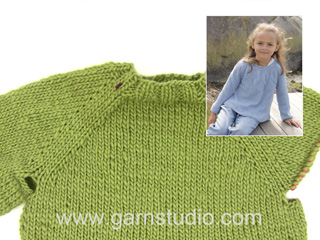
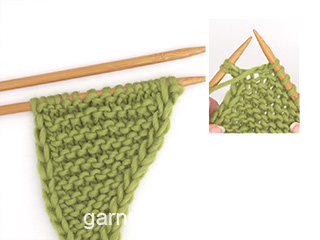
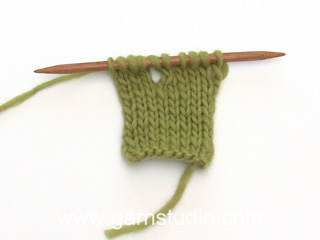



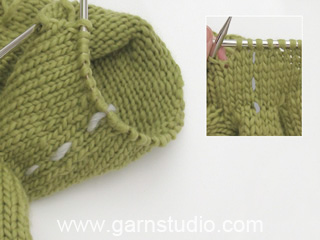


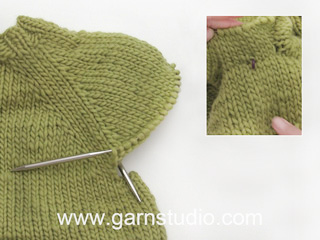
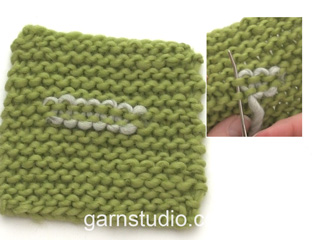

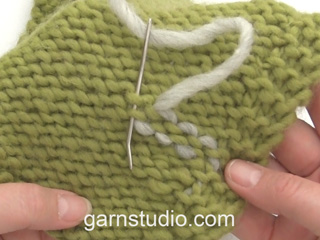
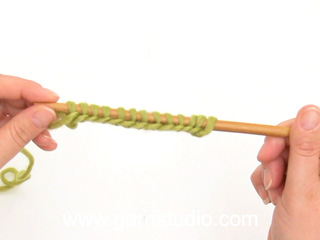
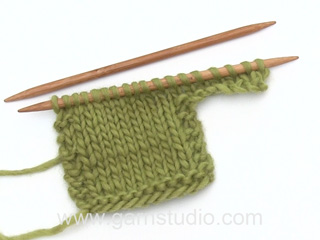
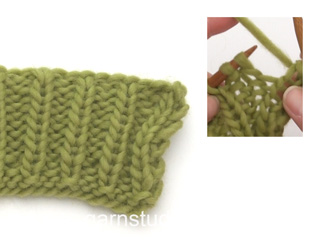
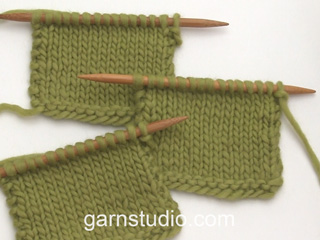


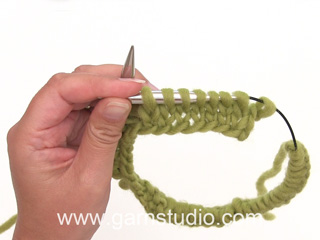
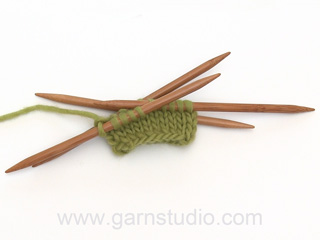
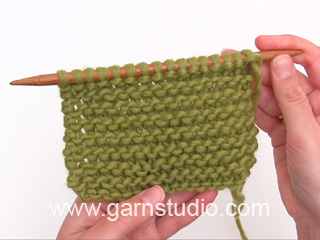
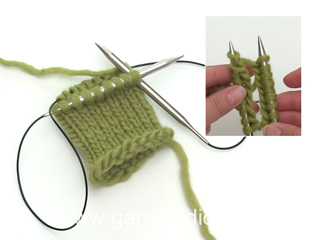
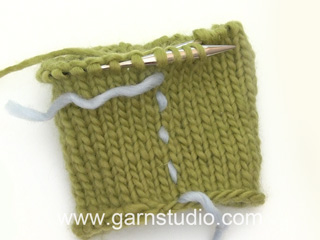





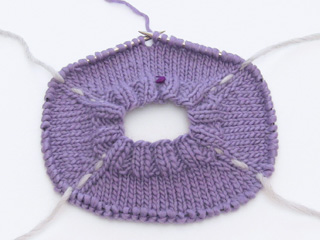




















Comments / Questions (27)
Det står att garnåtgången är uppdaterad. Stämmer inte. Stickar stl 9/10 och beställde 350 gr. Nu är garnet slut och jag har drygt en ärm kvar att sticka!
26.09.2024 - 09:34Knapphål görs från rätsidan. Men om man stickar tills 8 maskor återstår på varvet o gör knapphål där hamnar de ju på vänster sida? Där ska väl knapparna sitta?
31.08.2024 - 16:07DROPS Design answered:
Hej Mary-Ann, når du strikker ovenfra, starter du på retsiden på venstre forstykke, strikker rundt og når du har 8 masker tilbage er du på højre forstykke :)
03.09.2024 - 14:52Vielen Dank für die schnelle Antwort! Sehr hilfreich 👍🏻!
16.08.2024 - 16:54Die Raglanzunahmen sollen jede zweite Reihe erfolgen. Zählt einmal Hin plus Zurück als eine Reihe oder als zwei Reihen? Falls Hin und Rück als zwei zählen, passen die Maschenzahlen bei A1 bis A3 nicht. Vielen dank für die Hilfe und herzliche Grüße, Hanna
15.08.2024 - 19:53DROPS Design answered:
Liebe Hanna, wenn man in jeder 2. Reihe zunehmen soll, soll man in jeder Hinreihe zunehmen. Alle Reihen sind in den Diagrammen gezeichnet, dh die Hin- sowie die Rückreihen. Viel Spaß beim Stricken!
16.08.2024 - 08:08What does this mean in yoke: work 1 more repeat of A.2 in width between A.1 and A.3.
22.07.2024 - 07:43DROPS Design answered:
Dear Amna, it means that, in the same row, you will work one extra repeat of A.2, thanks to the increases in A.1 and A.3. For example, first you work A.1, A.2 and A.3 once each. After one full repeat of A.1, A.2 and A.3, you should have enough increased stitches to work like this on the next row: A.1, A.2, A.2, A.3. Each time you work A.1 and A.3 to the end you should be able to add another A.2 between them. Happy knitting!
27.07.2024 - 19:00What does this mean :work 1 more repeat of A.2 in width between A.1 and A.3. This is in yoke.
22.07.2024 - 07:42DROPS Design answered:
Dear Amna, it means that, in the same row, you will work one extra repeat of A.2, thanks to the increases in A.1 and A.3. For example, first you work A.1, A.2 and A.3 once each. After one full repeat of A.1, A.2 and A.3, you should have enough increased stitches to work like this on the next row: A.1, A.2, A.2, A.3. Each time you work A.1 and A.3 to the end you should be able to add another A.2 between them. Happy knitting!
27.07.2024 - 19:00Det er på jeres tegning !
14.07.2024 - 15:44DROPS Design answered:
Hej Gitte. Det ska vara riktigt mål, det är detsamma som i oppskriften. Mvh DROPS Design
18.07.2024 - 10:02Hej\r\nDet virker som om at målene på trøjen, i hvertfald på længden i siden under armen er forkerte. Str 3-4 år 13 cm i siden, det virker forkert ?
14.07.2024 - 15:43Jag behövde DUBBLA garnåtgången i str 110/ 116 fr 150 gr till 300 gr. Och då fick jag ca 2 m över.
10.06.2024 - 08:45Jeg skal i gang med trøjen men kan heller ikke se at garnforbruget er rigtigt ? \r\nSynes også at det ser forkert ud med maskeantallet. Det ser ud som om man slå det samme antal masker op til str 2-3/4 og 7/8 ? Er det rigtigt ? Venter på svar, tak
06.06.2024 - 18:38DROPS Design answered:
Hei Gitte. Garnmengden er nå oppdatert (250-250-300-350-350-400 g farge 18, hvit). Maskeantallet er det samme i begynnelsen, men så økes det forskjellig lengre ned i oppskriften. mvh DROPS Design
10.06.2024 - 11:36